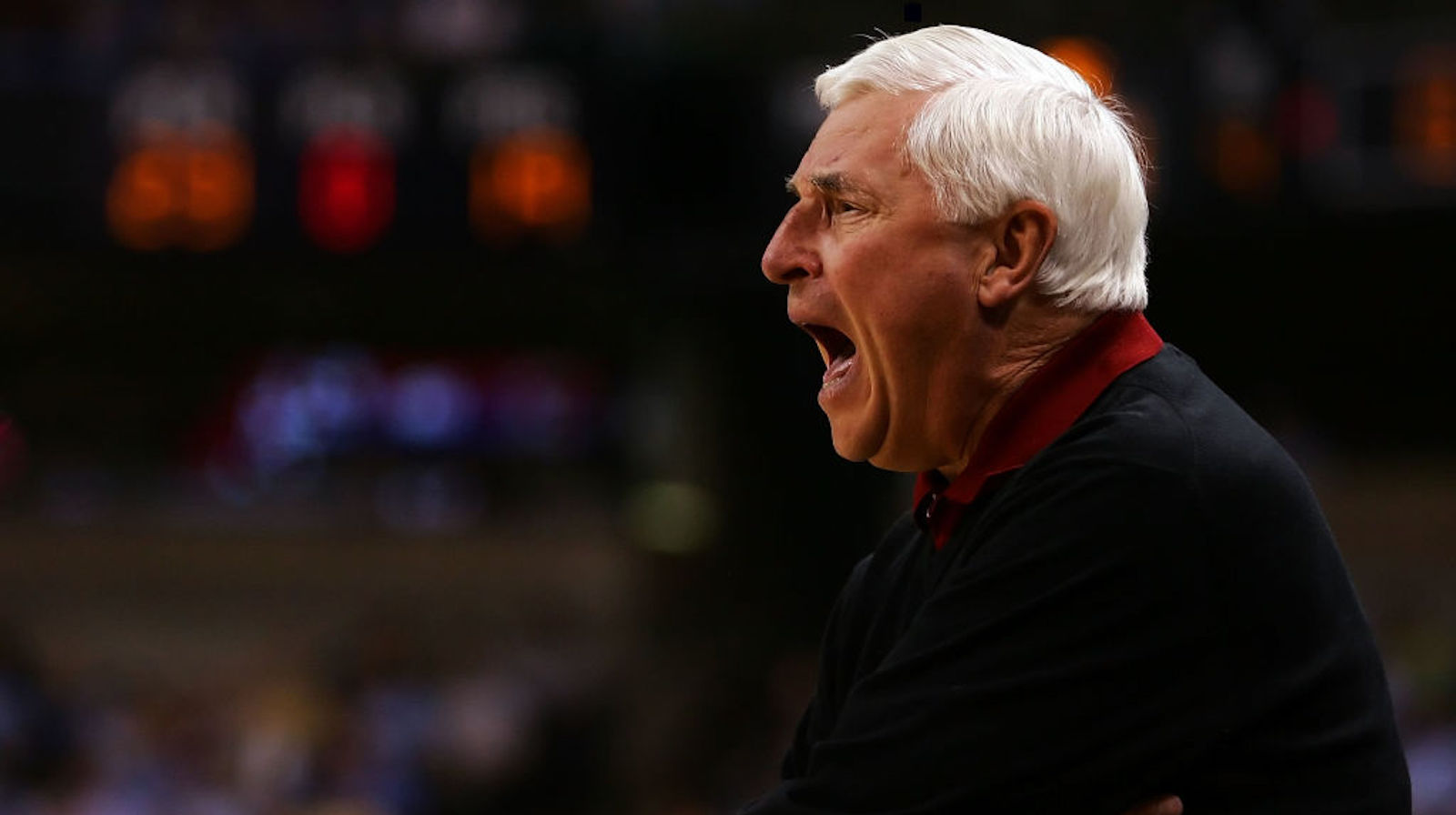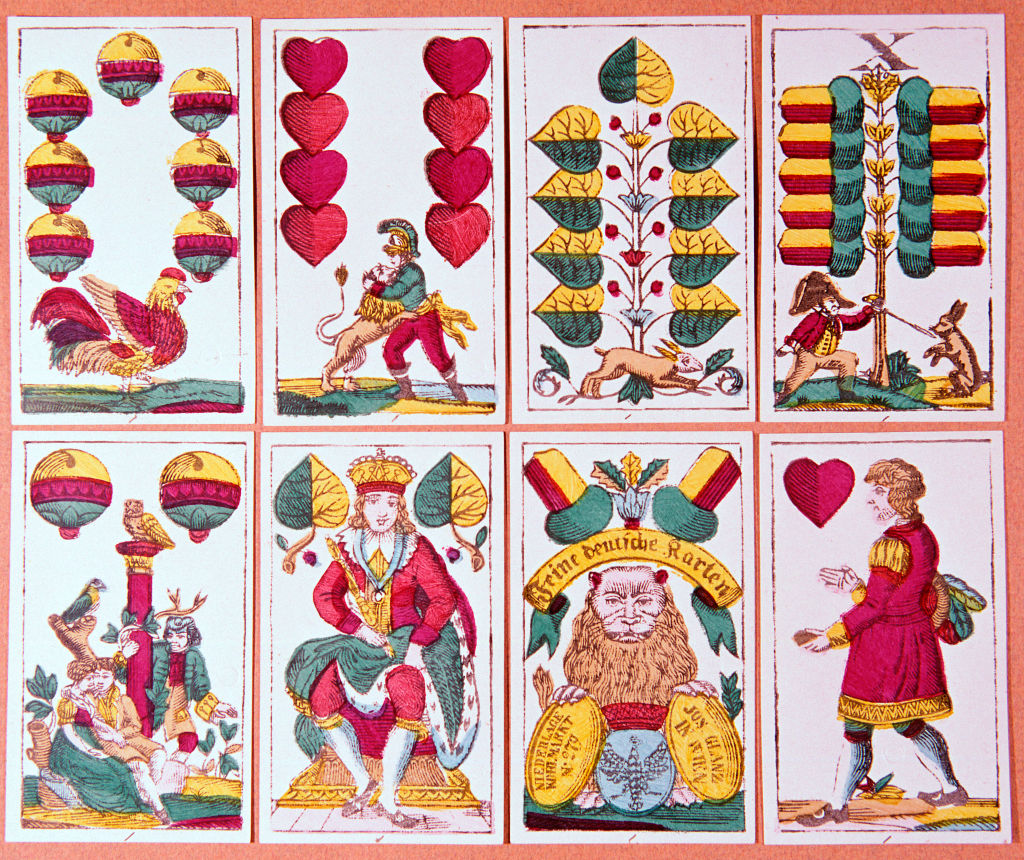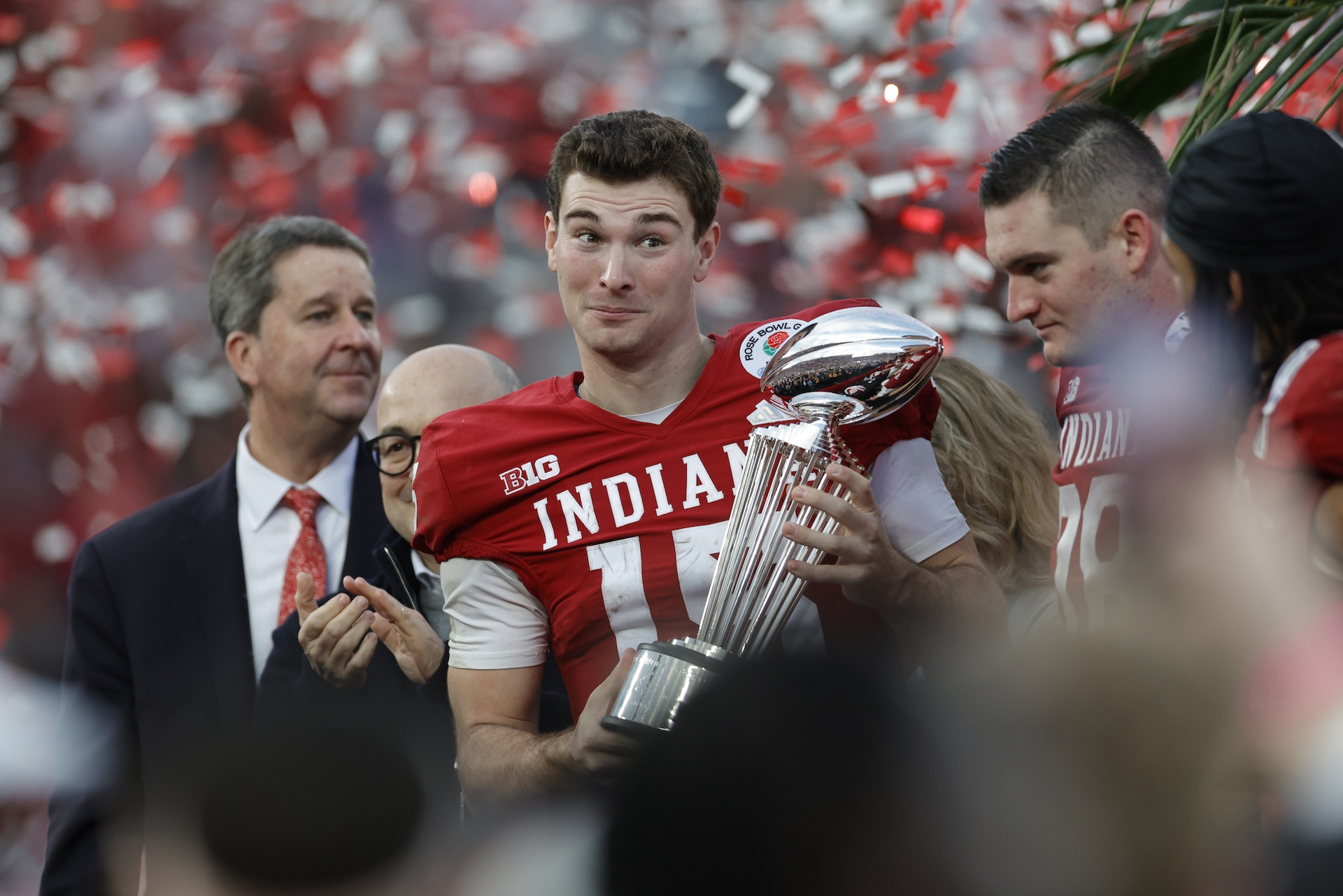“You must suffer me to go my own dark way.”
— Robert Louis Stevenson, The Strange Case Of Dr. Jekyll and Mr. Hyde
I have only one Bob Knight story. God knows, there are people who have more than I do. There are people whose reservoir of Knight stories is fathomless. Some of them have remained his admirers down through the years. Some of them are people who never bought his act. Some of them are people who gradually found the scales falling from their eyes as the Stations of the peculiar cross played out in public—the violent tantrum in Puerto Rico, breaking the press table telephone at an NCAA tournament game, the photograph with the whip, the epiphanies (and the wild success) of A Season On The Brink, the video of his throttling Neil Reed, stuffing the fan in a garbage can, assaulting a student, The Chair, and the final flood of ugly revelations that swept him out of Bloomington and all the way to Lubbock. For many people in and around college basketball, Bob Knight’s career became an accelerated trip through a wilderness of last straws and an endless graveyard of camels who died of broken backs.
I stood with a pale version of that second evaluation. I never had a lot of contact with him; when I covered college basketball full time, my concentration was located east of Indiana. But what I heard and read about him made me decide early on that, no matter how brilliant a basketball mind was in there underneath all the rage, the guy just wasn’t worth the bother of finding out. And that’s pretty much where I was in the early spring of 1991, when my only Bob Knight story began.
In 1991, the basketball team from the University of Nevada, Las Vegas entered the NCAA tournament not only as the defending champion, but as an undefeated team. This was that bomb squad led by Larry Johnson and Stacey Augmon. Serendipity being what it is, 1991 was also the 15th anniversary of the last team to run the table: Bob Knight’s Indiana Hoosiers, led by Kent Benson, Quinn Buckner, and Scott May. It was a group of players that had lost only one game in two years, an upset tournament loss to Kentucky.
It was a team of perfectly matched parts, a low-profile, high-powered machine. Benson, Buckner, and May were the top players, but they were not the kind of stars on which UCLA built its dynasty or with which UNLV ran amok 15 years later. Yet they beat Nos. 2, 5, 6, and 9 in the tournament; these included the best team Al McGuire ever had at Marquette, the best team C.M. Newton had at Alabama, a solid UCLA team, and a Michigan team that would begin the following season ranked first in the nation. Indiana rolled them all, peaking at the Final Four in Philadelphia.
(In fact, Indiana’s path to the title was so thick with highly ranked teams that it began the debate about seeding the tournament, which the NCAA finally did three years later.)
I kept Knight for last. I talked to Kent Benson in his auto dealership in New Castle. I talked to Scott May in the office of the apartment building he managed not far from the IU campus. I talked to Quinn Buckner on the phone from somewhere; I’d gotten to know him during his time with the Celtics, with whom he’d won a ring in 1984. All of them were supporters of their old coach, but all of them admitted that he wasn’t for everyone.
Finally, I called Kit Klingelhoffer, Indiana’s embattled sports-information director, to set up some time with Knight. We agreed that I would sit down with the coach, in the "cave" that A Season on the Brink had made famous, after practice in two days. This was not a happy development. The 1990-91 Indiana Hoosiers were a decent team, but not a championship one. They would finish 29-5, losing in the round of 16 in that year’s NCAA tournament. 83-65, to Kansas.
(Later, when it all hit the fan in Bloomington, a covertly taped tirade Knight had directed at this team emerged online. It is a fairly accurate clinical example of a sociopath that makes R. Lee Ermey at the beginning of Full Metal Jacket sound like the Singing Nun. Added historical note: The popularly accepted identity of the surreptitious taper is Lawrence Frank, then a manager at Indiana and later, the coach of the New Jersey Nets. Further added historical note: The tirade came after Indiana had beaten Northwestern by 40 points.)
Anyway, it was the “after practice” part that sent my apprehension into the red zone. There was absolutely no way the man was going to be in a mood to talk after practice. If I were lucky, practice would only have disappointed him, and not enraged him. So he gave me a perfunctory handshake and we went into the cave. With us went Bob Hammel, the longtime columnist for the Bloomington Herald-Times who long ago had achieved a modus vivendi with Knight unlike any enjoyed by any sportswriter anywhere.
Practice apparently had gone very well because Knight was merely grumpy and uncooperative. His answers were short and almost completely useless. Here I was, talking to him about his masterpiece, the peak of his career as a coach, and I might as well have been talking to him about his history with foot fungus. I was dying, right there in an armchair in the cave. Then, Knight came out with what passed for an anecdote, and Hammel piped up, “No, Bob, that wasn’t that game. It was the Michigan State game later that season.”
Knight brightened immediately. “You’re right,” he burbled. “I was confusing it with that time before we played Minnesota…”
And we were off. He and Hammel reminisced about that season for the next hour while my little tape recorder hummed away on an end table. Some of the anecdotes I’d heard from the former players. Some of them were only what Knight (and, occasionally, Hammel) remembered. Knight even confessed that it was his overthinking his personnel that cost that bunch the Kentucky game that was the only one Indiana lost in two seasons.
The Hoosiers had lost Scott May to a broken arm in February of 1975. Knight admitted that he’d rushed May back in time to play in the tournament and May was only able to muster up seven minutes in the loss to Kentucky. Meanwhile, the bench players who had stepped up while May was injured felt submarined. “I got half of May back,” Knight said. “And I lost all the other guys.”
Since I was primarily an audience at this point, I had a lot of time to think about what had happened. Knight was plainly enthusiastic about discussing his greatest team. He just didn’t want to talk about them to me. But he was willing to let me sit in while he and Hammel chewed the fat over old times, and he was willing to let me use all that I heard, as long as he could continue to will me invisible at his leisure. This, I thought to myself, is a very, very strange man.
His gift for willing people to disappear, to make their common humanity vanish in his own mind, was his ultimate undoing. Every time there was another cascade of revelations, I thought back to how easily he had made me vanish that day in the cave, and I was thankful that the experience had been so benign, and I thank Bob Hammel for that to this day.
There is perhaps no literary trope more misunderstood—and therefore, misused—than Robert Louis Stevenson’s immortal Henry Jekyll and Edward Hyde. Often, the two are used as a a kind of balance, a rough form of moral balance, which is not the point of the story at all. It is not a story about yin and yang. It is a story about a man’s gradual surrender to the worst of himself, how the evil inherent in his nature gradually overwhelms the good because of the good Henry Jekyll’s hubristic insistence that he must be able to control Edward Hyde as long as he could externalize his evil. Too late, he realizes that to externalize the evil is to unleash it. Eventually, Jekyll cannot control his transformation into Hyde. At the end of the story, his friends break into his laboratory and discover Hyde lying dead in Jekyll’s clothes, having probably committed suicide. In a note, he concludes, “I bring the life of that unhappy Henry Jekyll to an end.”
What came out after Knight was revealed by a covert videotape to have choked Neil Reed at an Indiana practice was a narrative of sociopathic and violent indulgence. It was not a story of an “interesting” and successful man with a “dark side.” It was a story of externalized evil occasionally illuminated by professional success. Bob Knight was a giant and, when he fell, he fell like one, and that’s all there is to say about it. Hyde died in Jekyll’s tattered clothes.






